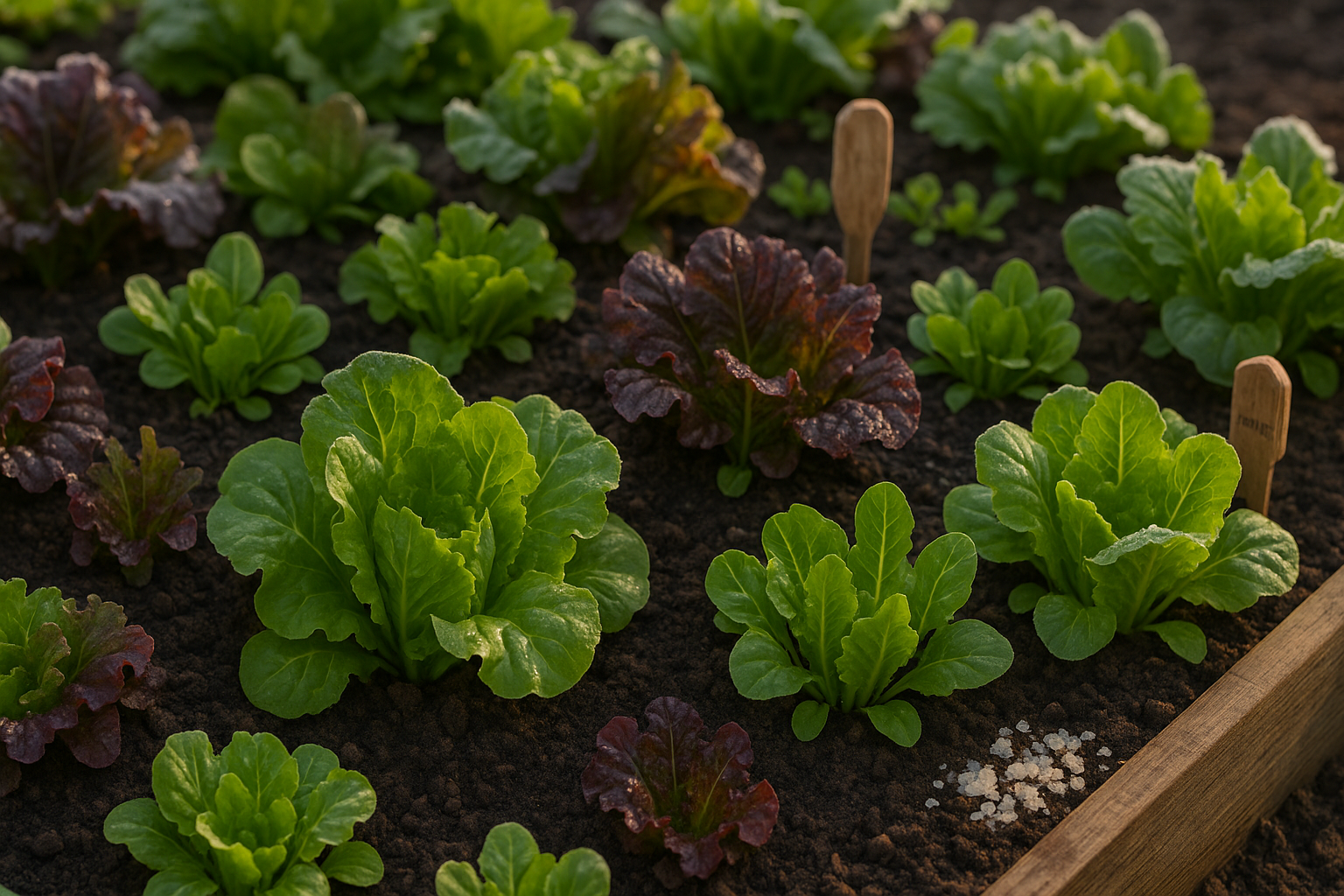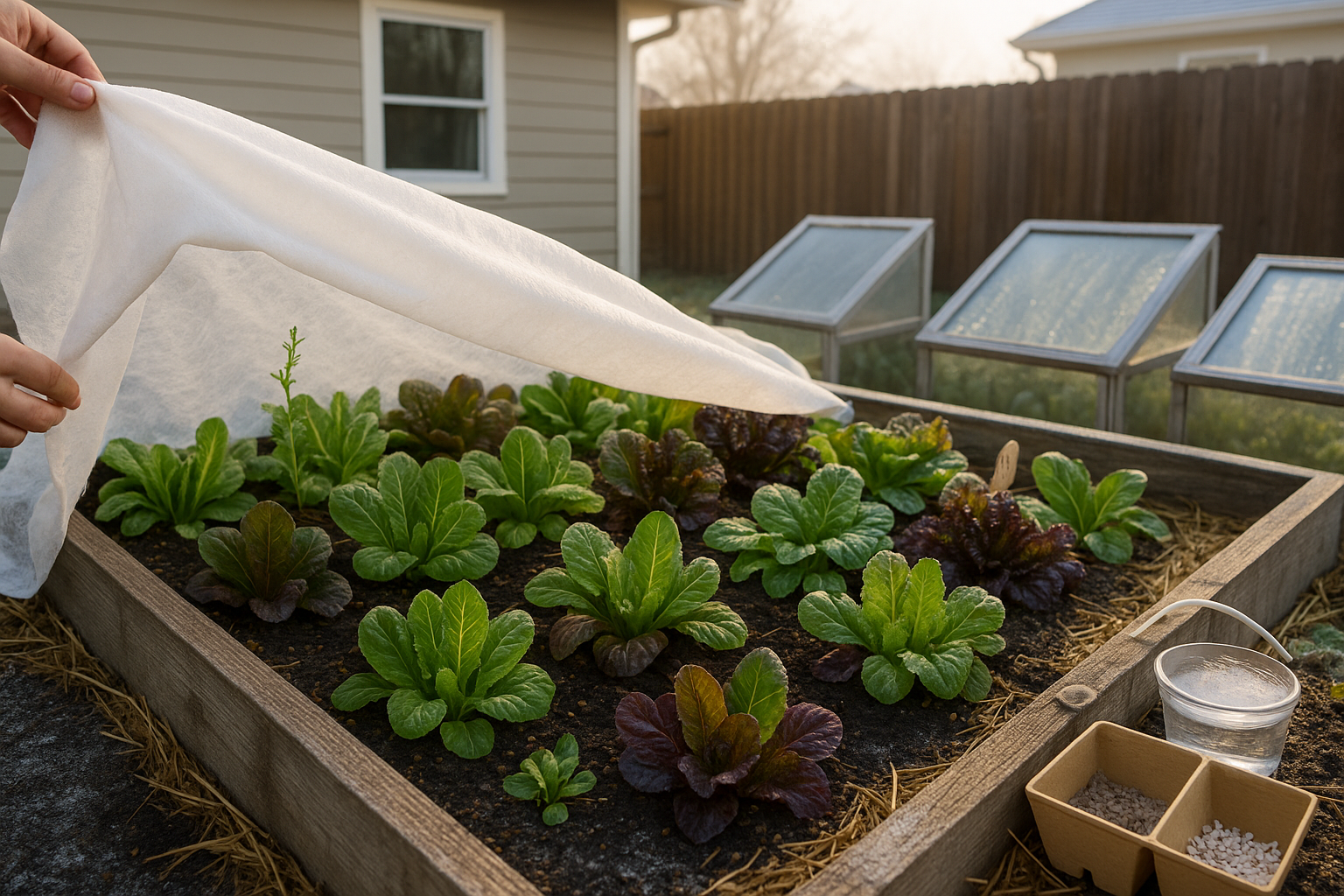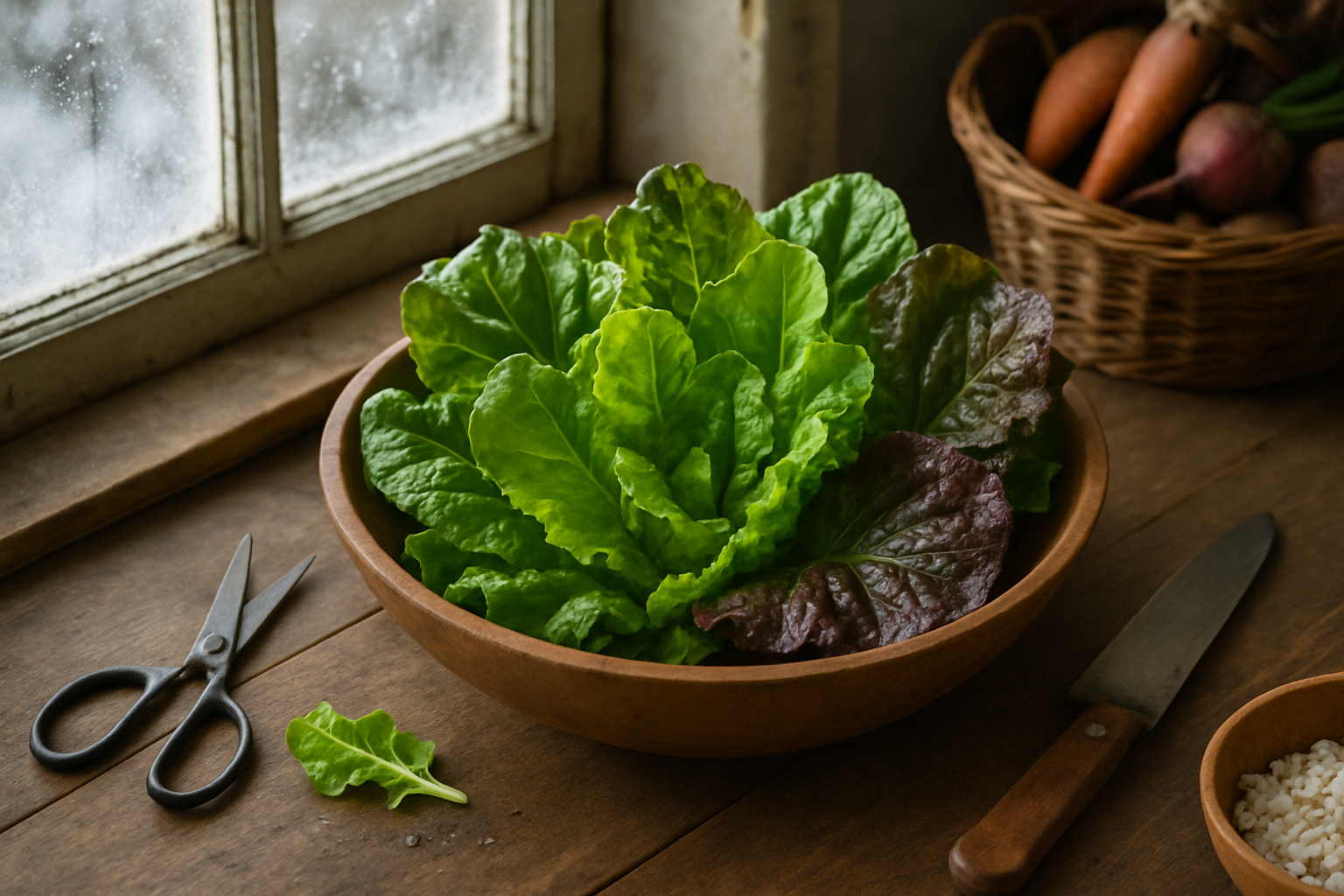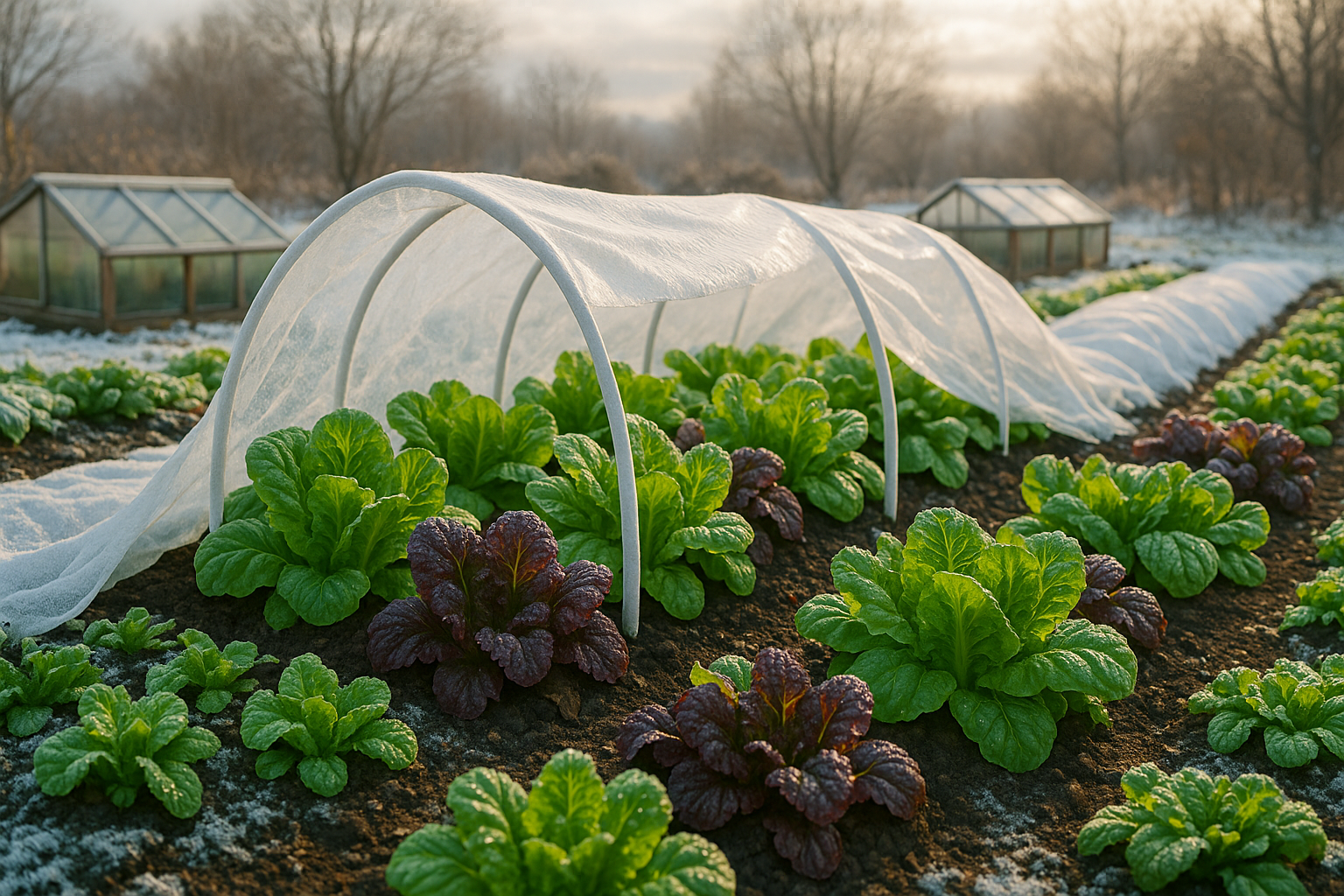How to Grow Lettuce in Cold Weather (Winter Harvest Tips)
Lettuce is a perfect choice for cool-weather gardeners because it thrives in lower temperatures and doesn’t bolt or turn bitter like it might in summer heat. Winter harvesting offers fresh, crisp greens when most gardens have gone dormant, giving you a nutritious bounty right at your doorstep. Cold-grown lettuce also tends to be sweeter and more tender since chilly nights slow plant growth, concentrating flavor.
However, growing lettuce during winter comes with challenges like frost damage, stunted growth, and slow germination—conditions that can ruin your crop if not managed carefully. To help you succeed, this guide covers the essentials for winter lettuce growing:
- Choosing hardy varieties like Winter Density or Rouge d’Hiver
- Timing your planting to maximize daylight
- Practical frost protection methods such as row covers or cold frames
We’ll also share winter care strategies, including watering tips, spacing advice to reduce disease risk, and how to harvest without stressing the plants. Whether you’re a beginner or an experienced gardener, these tips will set you up for harvesting delicious lettuce all winter long.
Choosing Cold-Tolerant Lettuce Varieties

Cold-tolerant lettuce varieties are specially bred to survive and thrive in chilly weather, making them perfect for gardeners who want to extend their growing season into late fall or even winter. When shopping for seeds, look for terms like “cold-hardy” or “frost-resistant,” or check for varieties recommended for early spring or late fall planting—these are strong indicators of cold tolerance.
Some of the best types for winter growing include butterhead lettuces, such as Winter Density and Marvel of Four Seasons, which have tender leaves but resist frost surprisingly well. Romaine varieties like Winter Wonderland and Parris Island Cos are also reliable choices, as their upright heads shed moisture and help prevent rot. Many loose-leaf lettuces, like Red Salad Bowl and Lollo Rosso, can shrug off light frosts and keep producing.
For the longest harvest, mix several types in your winter beds—leaf lettuces mature quickly and can be harvested as “cut-and-come-again,” while butterhead and romaine take a bit longer but provide a steady supply once mature. Stagger your planting dates every couple of weeks and pair different growth rates in the same garden row. This way, even as one type reaches its peak or starts to fade, another will be ready to pick, offering fresh greens for salads all season.
And don’t forget to protect your lettuce with row covers or cloches during extreme cold spells to help them bounce back after a chilly night.
When and How to Plant Lettuce for Winter Harvest
For a bountiful winter lettuce harvest, timing is everything. Aim to sow your seeds 6-8 weeks before your area’s first hard frost—usually late August to early September in most temperate regions. Colder climates should target the earlier end of this range.
Direct sowing outdoors works well if you have mild autumns; simply plant seeds in prepared, well-drained soil, and cover them with a lightweight row cover to protect young seedlings from early chills and curious pests. If you face harsher early frosts or want a head start, start your lettuce seeds indoors under grow lights or a sunny window about 4-5 weeks before transplanting. This method allows you to nurture healthy seedlings that can withstand the drop in temperatures when planted out.
For a continuous supply, practice succession planting: sow small batches every 2-3 weeks throughout the fall so new crops mature as older ones are harvested. Mixing quick-growing varieties like ‘Black Seeded Simpson’ with slower, cold-hardy types like ‘Winter Density’ gives you a rolling harvest of fresh leaves.
With a bit of planning and protection—think cold frames or heavy row covers—you’ll keep the greens coming even as winter presses in, making salads a homegrown treat all season long.
Protecting Lettuce from Frost and Cold Damage

Protecting your lettuce from frost and cold damage is essential for a healthy, productive crop, especially in early spring or late autumn. When temperatures drop, lettuce can show signs of stress like wilted or limp leaves, darkened or translucent spots, and eventually mushy, decayed tissue.
To prevent these problems, gardeners often use simple but effective frost protection methods. Row covers are a popular choice—they’re lightweight, breathable fabrics that drape over plants, providing a few degrees of warmth while allowing light and moisture through.
Other Protection Options
For extra insulation during cold snaps, consider using cold frames or cloches. Cold frames are clear-topped structures that trap heat, acting like mini-greenhouses. Cloches are individual plant domes that shield young seedlings from sudden temperature swings. Low tunnels, which are row covers supported by hoops, create a tent-like structure that helps protect lettuce from frost and wind.
Additional Cold Damage Prevention Tips
- Water your lettuce thoroughly before a cold night, as moist soil retains heat better than dry soil.
- Apply a thin mulch layer—such as straw or dried leaves—around the base of your plants to insulate the roots.
- Choose a planting site that gets plenty of morning sun and is sheltered from harsh winds, like near a south-facing wall or fence.
By combining these practical strategies, you can keep your lettuce thriving even when Jack Frost comes calling and enjoy crisp, fresh leaves long after the first chill arrives.
Caring for Lettuce Through the Winter Months
Caring for lettuce through the winter months isn’t as daunting as it might seem, but it does require a little extra attention. Keep the soil just moist—not soggy—by watering only when the surface feels dry, as overwatering can quickly lead to rot in cool conditions.
Thin your lettuce seedlings if they start to crowd each other; proper spacing improves airflow and helps prevent disease. Regularly pulling up weeds is also crucial since weeds rob your lettuce of nutrients and can harbor pests.
Winter brings shorter daylight hours and lower temperatures, both of which slow lettuce growth. Don’t panic if your crop seems to stall—this pause is normal until days grow longer. Harvest leaves as needed, but be patient; full heads may take much longer to mature.
Meanwhile, keep an eye out for common winter pests such as slugs and rodents. Slugs love damp, dark environments like cold frames—scatter crushed eggshells or use organic slug pellets to keep them at bay. For rodents, elevate beds or use wire mesh to block their entry.
With a little vigilance and care, you’ll keep your winter lettuce healthy for delicious harvests throughout the colder months.
Harvesting and Enjoying Winter Lettuce

Winter lettuce thrives in cooler months, offering crisp, sweet leaves even when other greens are scarce. For the best flavor and texture, harvest your lettuce in the morning when the leaves are plump and full of moisture.
Use sharp scissors or a knife to snip the outer leaves first, allowing the center to continue growing. This “cut and come again” method can keep your plants producing for weeks. Alternatively, gently pick mature outer leaves by hand, leaving the younger inner leaves to mature.
Avoid cutting down the whole head unless you need a large amount at once, as continual harvesting helps the plant last longer. Quickly rinse the leaves in cold water, spin dry, and store them in a breathable produce bag or a lined container in the fridge to maintain crispness.
Winter lettuce is excellent tossed into salads with roasted root veggies, layered on hearty sandwiches, or chopped into warm grain bowls. For a quick lunch, try it as a wrap for grilled chicken or tofu.
With gentle picking, smart storage, and a few creative recipes, you’ll maximize both the freshness and enjoyment of your winter lettuce haul.
Conclusion & Quick Tips
Growing lettuce in winter doesn’t have to be daunting—choose cold-hardy varieties, use row covers or cold frames for protection, and keep the soil consistently moist but not soggy. With a little care and some creativity, you’ll enjoy crisp, homegrown greens all season long.
Don’t hesitate to experiment with different lettuce types or sowing schedules to see what works best in your space.
Quick tips:
- Harvest outer leaves often for continuous growth.
- Water in the morning to prevent freezing.
- Mulch well to conserve warmth.
Most importantly, have fun and savor the unbeatable taste of fresh lettuce in the chilly months!
